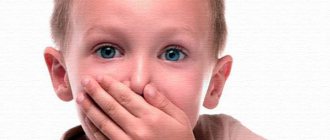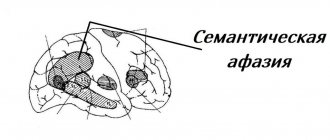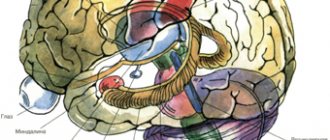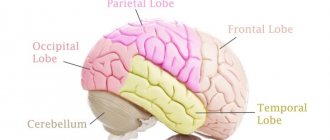Antisocial behavior of a teenager
Antisocial behavior of adolescents
Adolescence is a period that has a huge impact on the rest of a person’s life. How will he react to the events of his life, make decisions, what kind of social circle will he choose, how will he treat himself and his loved ones, how will he build relationships with people, will he be successful, will he learn to achieve what he wants, what will his aspirations be and how? he will overcome difficulties - personal resources, skills and abilities for all this are laid in adolescence.
Adolescence is the age range from 13 to 19 years. It is divided into two periods: younger adolescence (puberty) - from 13 to 15 years (inclusive) and older adolescence (juvenile) - from 16 to 19 years (inclusive).
This is a time of great restructuring not only of the body, but also of the personality. They are full of conflicting feelings and thoughts. Sometimes they cannot explain their actions. Parents also cease to understand their child. Previous, familiar models of interaction and influence stop “working.” Conflicts are becoming more frequent.
Conflict is also enhanced by physiological characteristics. The weakness of inhibitory processes in the cerebral cortex makes the intentions of adolescents decisive, sometimes thoughtless, hobbies - bright and urgent, judgments - categorical, although not sufficiently substantiated. They want to do what they have planned “here and now,” but if they delay execution, the whole idea may seem unnecessary. For the same reason, it is easy for them to gain authority and easy to lose it. They notice the shortcomings of adults and tend to exaggerate them, evaluating them categorically, in black and white.
The teenager questions everything. Adults say it's bad. Why? I want to try this myself. What if this is good? What will happen if I don’t listen? So, a teenager starts by pushing boundaries and exploring new territories.
This often leads to violation of any rules established in the social environment, even to the point of committing crimes. This behavior is sometimes called "teenage rebellion." But it is not always really a rebellion. Often a teenager simply does not think about the consequences of his actions. In general, the future looks very vague for him. He lives in the present. A teenager’s sense of responsibility has not yet been formed, since all life’s problems have so far been decided for him by adults. While winning independence, a teenager rarely thinks about the fact that his courage is based on the feeling of a well-covered “rear” provided by his parents.
However, not all parents are able to provide their children with a sense of security and reliability. The crisis of the family institution in modern society gives rise to many problems that can ultimately lead a teenager to deviant behavior.
There are different types of deviant behavior:
- Deviant behavior is a separate act or system of actions of an individual that violates the socio-psychological, moral and cultural norms established in a given society, but not illegal behavior. This includes: absenteeism, leaving home, vagrancy, aggressive behavior, self-injury, suicide, sexual deviation, early alcoholism, etc.
- Addictive behavior – abuse of various substances that alter mental state; these include tobacco, alcohol, and drugs.
- Delinquent behavior – breaking the law, committing crimes.
However, in this case, we will consider deviant behavior in more detail, since this type of behavior is most common among students at our school.
Deviant behavior is characterized by the use of one’s own methods of self-expression: slang, style, symbolism, fashion, manner, misconduct. But if a teenager’s clothing and adherence to any style of self-expression does not cause harm to others, but only causes their discontent, then through misdeeds he causes significant damage to himself and other people. At the same time, his deviant actions are:
- as a means of achieving a significant goal;
- as a way of psychological release, replacing blocked needs and switching activities;
- as an end in itself, satisfying the need for self-realization and self-affirmation.
Deviant behavior of adolescents is characterized by a number of features, such as:
- lack of life experience and low level of self-criticism;
- lack of internal assessment of life circumstances;
- increased emotional excitability;
- impulsivity, motor and verbal activity;
- increased suggestibility and imitation;
- a special desire for independence and negativism;
- imbalance between the processes of excitation and inhibition;
- low legal literacy.
Throughout Russia, there has been a decrease in the age of minors registered for unlawful acts. There are many reasons for this phenomenon: these are dysfunctional families in which children grow up, and neglect of children, and a tendency to commit crimes due to the peculiarities of the structure of the psyche, and the immaturity of the processes of inhibition of mental reactions to stressful situations, and the irresponsibility of the teenager himself for his own actions, which is often justified by ignorance of the laws.
Let's consider the influence of family on the formation of antisocial behavior.
When a child comes into this world, he initially encounters the influence of the microenvironment - his family. For a small child, the family is the only reference point through which the child learns about the world. If a child is desired and both parents want and are able to take care of him and show him their love, then the child grows up to be a self-sufficient, integral and confident person. Such a child has trust in the world around him (marosocium), formed by his parents, and therefore there is no need for him to oppose the world around him without good reason.
If a child comes to a family in which he is not welcome, or for some reason the parents cannot take care of him, are not able to give him their love, such a child feels unneeded, unprotected, and gradually he develops a negative attitude to the surrounding world (marosocium). Initially, a fear of society is formed, a feeling of worthlessness and vulnerability in front of other people. Then, when the child becomes more mature, and this is precisely the moment of adolescence, the child tries to hide the feeling of fear and vulnerability under the guise of aggressiveness. And the higher the fear of society, the resentment towards parents for not giving him their warmth, and at the same time the resentment towards the whole world, the higher the level of aggression in a given individual. Moreover, aggression can manifest itself not only externally (on others), but also on oneself (auto-aggression). Auto-aggression is intertwined with a deep sense of guilt and low self-esteem, which leads to various types of suicidal behavior (substance use, alcoholism, entertainment associated with an increased risk to life and health, suicide attempts). As a rule, such teenagers grow up in socially disadvantaged families, but in the last 10-15 years there has been a steady increase in deviant behavior among teenagers even in apparently quite prosperous families. In this article we will not consider the reasons for this phenomenon.
Another reason for antisocial behavior in adolescents is functional and mental disorders of organic origin. Organic disorders include brain lesions of various origins. Functional disorders make up the majority of mental disorders. These are mainly disorders of behavior or mental functions associated with changes in the activity of the nervous system; they seriously make it difficult or impossible to adapt to social norms. These include the following disorders:
- schizophrenic;
- paranoid;
- affective (manic-depressive psychosis);
- general depression;
- anxiety states (phobias, panic disorders, obsessive-compulsive – obsessive and irresistible desire to perform a certain action);
- depersonalization - a person’s loss of contact with everyday life, which leads him to perceive life as a dream and form the impression that all his thoughts and actions are beyond his control;
- various sexual deviations.
Teenagers who have certain sexual disorders are prone to sexual crimes. A connection has been established between sexual crimes and the type of psychopathy. Thus, among epileptoid and schizoid psychopaths, the predominant sexual crime is sadism, among hysterical psychopaths - exhibitionism, among unstable and asthenic psychopaths - pedophilia, in addition, among them only gang rape is observed.
Various forms of deviant behavior are also common among educationally neglected adolescents. The illegal behavior of such teenagers is often associated with a negative attitude towards society, as well as irresponsibility and ignorance of the laws.
PREVENTION AND RECOMMENDATIONS
Prevention and recommendations directly depend on which particular method of manifestation of deviant behavior the teenager chooses.
- Curiosity, the desire to learn and experience as much as possible.
- organizing events in which a teenager is given the opportunity to satisfy his curiosity through exploring himself, different aspects of life, the world, nature, etc.;
- reducing curiosity about forms of deviant behavior through demonstrating the narrowing of the living space of a person leading an illegal lifestyle or using psychoactive substances, and the growth of life problems in such people.
- Experience of "drive".
- organizing events, competitions, hikes, games, etc., where teenagers are given the opportunity to experience the joyful tension of reasonable risk, overcoming their own fear;
- a vivid demonstration of the lack of joyful tension in the dark gloom of the life of a drug addict; the bitterness or self-destructiveness of the everyday life of a person who engages in aggressive or illegal behavior.
- Having fun.
- teaching teenagers to have fun without using psychoactive substances;
- Sex education for parents and teenagers.
- Finding ways to relieve boredom.
- prevention of violence and child abuse in the family;
- allow the child to dream and try his best, help in achievements, instead of criticizing for failures;
- develop leadership qualities and self-confidence;
- develop creative abilities;
- adhere to ourselves and talk about the basic life attitude: the meaning of life does not come from the outside; a person is given life, and what to fill it with and what to turn it into, everyone decides for himself;
- stick to and talk about the attitude towards life: what happened has already passed and cannot be returned, what will happen has not yet come, but what this future will be depends on today;
- teach to set large and small goals, identify tasks that need to be solved to achieve them.
- Belonging to a social group or fear of physical and moral violence.
- developing self-confidence and self-acceptance;
- learning to build independent relationships;
- development of communication skills.
- Protest against parents.
- training parents to effectively interact with teenagers;
- teaching teenagers to non-aggressively and confidently defend their opinions;
- teaching teenagers to self-analyze their desires and choices: “Why am I doing this? Do I really want this or am I dependent on the desire to contradict and prove something?
- The desire to reduce anxiety caused by self-doubt.
- developing the ability to see real positive qualities in oneself, self-acceptance;
- learning to set realistic goals and step by step to achieve them;
- constant support in achieving goals (from parents and teachers) and developing self-confidence through emphasizing self-confidence and a calm attitude towards temporary setbacks.
- The desire to escape the awareness of the injustice of the world, disappointments (including in love), and the experience of bereavement (death of loved ones).
- teaching a teenager to see the duality of life and social phenomena, that is, to show that any negative phenomenon contains a positive grain, and any positive phenomenon contains a prerequisite for the negative;
- teaching positive thinking techniques;
- psychological support for a teenager when he experiences grief and disappointment in love.
As for teenagers with various mental disorders, it is necessary to be vigilant: careful monitoring of the teenager’s behavior. If prerequisites for severe forms of deviation are identified (drug use, illegal actions, sexual deviations, suicidal behavior), it is necessary to raise the question of involving specialized specialists (psychiatrist, narcologist, psychologist, social teacher) and raise the question of the safety of this teenager at school.
However, it must be remembered that despite external opposition from society, a teenager experiences a great need for love and support from everyone who can give it to him.
Literature:
- Organization of work on the prevention of antisocial behavior of minors in educational institutions: Methodological recommendations. – ASOU, 2011. – 40 p. https://shkval-lotoshi.1gb.ru/K/doc/1.pdf
Reasons for asociality
The deviant personality type is formed as a result of the following groups of factors:
- medical;
- pedagogical;
- social.
Also, the cause of deviations may lie in psychological pathologies. They arise when several groups of factors are combined and are difficult to treat.
Medical reasons
Schizophrenia is one of the causes of asociality
Medical factors that provoke asociality include:
- lesions of the fetus inside the womb;
- infections and brain injuries;
- psychosomatic abnormalities;
- schizotypal disorder,
- schizophrenic conditions;
- infantilism, ADHD, heboidity.
Pedagogical reasons
Among the causes of deviance manifested due to improper upbringing are:
- negative example of parents and other family members;
- excessively high demands on the child;
- overprotection or lack of guardianship as such;
- ignoring the child's needs;
- indulgence of all whims;
- frequent and unfair punishments;
- lack of trusting relationships in the family.
Excessive care for a person leads to an antisocial lifestyle
Social reasons
The social factors of deviant behavior include the following:
- problems communicating with peers in children and adolescents;
- the desire to assert oneself at the expense of others;
- material and social inequality;
- living in a dysfunctional family;
- influence of religious sects, subcultures;
- bullying, bullying, ridicule;
- physical and sexual violence.
Social reasons also include addictions that provoke deviance.
general characteristics
Human behavior is formed as a reaction to a combination of several factors: the social environment, a specific situation and one’s own personality. The easiest way to describe the conformity of human behavior to generally accepted norms is to use concepts such as “normal” and “abnormal” behavior. “Normal” can be called behavior that fully meets the expectations of others. It also illustrates a person's mental health. Therefore, “abnormal” behavior deviates from generally accepted norms and may be an illustration of mental illness.
Abnormal behavioral responses come in many forms. Thus, behavior can be: pathological, delinquent, retreatant, non-standard, creative, deviant, deviant and marginal. The norm is determined on the basis of criteria that can be negative and positive. In the first case, the norm is considered as the absence of signs of pathology, and in the second – as the presence of “healthy” symptoms.
From the point of view of social psychology, antisocial behavior is a way of behaving in a certain way without taking into account social norms. This formulation connects deviation with the process of adaptation to society
Thus, deviation among adolescents usually comes down to forms of unsuccessful or incomplete adaptation.
Sociologists use a slightly different definition. They consider a symptom normal if it is more than 50 percent prevalent in the community. Thus, normal behavioral reactions are those that are characteristic of most people. Consequently, deviant behavior manifests itself in a limited circle of people.
From a medical point of view, deviant behavior does not refer to either medical terms or forms of pathology. Its structure includes mental disorders, reactions to situations, developmental disorders and character accentuations. However, not every mental disorder is accompanied by abnormal symptoms.
Psychology and pedagogy define deviant behavior as a method of action that causes harm to an individual and complicates its development and self-realization. In children, this method of response has age restrictions, and the concept itself applies to children over 7 years old. The fact is that a young child cannot fully understand and control his actions and reactions.
Based on various approaches, a general definition of deviance can be formulated. So, deviance is a confident way of acting that deviates from social standards, causes harm to the individual and is marked by social maladjustment.
Character traits
Let's consider the main signs of an antisocial personality. Such people have the following characteristics:
- Very charismatic. People easily fall in love with such people, because their appearance and behavior are designed to arouse the interest of others. Sociopaths seem bright and unforgettable, extraordinary and successful.
- Most often they belong to wealthy strata of society. And this is not at all because they were spoiled by money, but because of their well-developed ability to benefit. Sociopaths take from the world whatever they want, meet influential people and acquire the necessary connections. Their main goal is power, as well as expensive things and money, in a word, everything that elevates them above others.
- Their revenge is much stronger than their resentment. Sometimes a complete stranger comes under attack, who has not even done anything wrong to the antisocial person. However, she is already beginning to take revenge in advance. For example, an antisocial husband will hit his wife if she does not serve him dinner on time. At the same time, he will be completely confident that he is right. After all, he was offended! The sociopath won’t even think of relating his actions to what happened.
- Risk-prone. It seems that the antisocial personality has practically no instinct of self-preservation. Often such people are partial to dangerous hobbies and adventures, alcohol, drugs and gambling. From the outside it seems that they do not value their own life at all or believe that they will certainly emerge victorious from all situations. And this despite the fact that those who are nearby are suffering or in danger.
It is worth noting that it is sociopaths who most often purchase convertibles in order to drive them only in the warm season. They will be able to shock you on the first date and be etched in your memory forever. Only asocials, without a stable income, will buy the most expensive clothes. It’s also not worth it for a long time to guess what type of personality the lady belongs to, who, without a twinge of conscience, will hang herself on other people’s husbands in the presence of their wives. Yes, all this relates to describing the character of an antisocial personality.
Educational institutions as a factor
As noted earlier, educational institutions are also responsible for the behavior of their students. Thus, in the process of learning, certain norms of relationships are formed, and socialization in society begins. Teachers must not only guide and manage students, but also participate in the process, quickly and productively respond to abnormal phenomena.
For educational institutions, we can also identify factors that help identify the role of educational processes in the formation of correct behavioral tactics. Among these are:
- social reasons - if a child does not have the opportunity to develop intellectually due to family factors (there is no opportunity to study at home due to the lack of proper conditions), then over time he will noticeably begin to lag behind his peers - and this, in turn, will contribute to disunity in the team , quarrels, insults;
- pedagogical reasons - almost everything in the educational process depends on the teacher, so his main task is to create a comfortable atmosphere for mastering the material. Many teachers choose an authoritarian teaching style, but this causes more problems than it gives results;
- subjective reasons for the individual - this group includes all other factors that are very individual.
Psychiatrists' opinion
There are many circumstances that contribute to the development of deviation. Experts say that it may be associated with biological reasons, characteristics of upbringing, or a certain way of thinking. There are two concepts - antisocial behavior and antisocial. How are they different? Many scientists associate these phenomena with the presence of mental disorders. Psychiatrists distinguish two types of individuals with such deviations. According to this point of view, antisocial individuals include:
- People who have isolated themselves from society. They have a special inner world. There is almost no contact with others. The experiences of such individuals, their emotions, attachments are not manifested externally and are unknown to others. The isolation of such individuals does not cause them suffering. Low-income people with this disorder become vagabonds. The rich are gaining a reputation as eccentric eccentrics.
- Persons who are unable to establish contacts with others. They cannot function normally in society and experience great suffering as a result. Such an individual perceives any interaction as torture. Therefore, he tries with all his might to hide from others. Others notice oddities in a person’s behavior (excessive shyness, unceremoniousness, ridiculous actions) and also instinctively avoid communication. As a result, the antisocial personality is deprived of friendship and romantic relationships. Such people are forced to spend a lot of time at home and not go anywhere. They worry about being unable to realize themselves at work or start a family.
These personality types do not have a negative impact on society.
According to psychiatrists, cases of antisocial behavior are characterized by a negative impact on others. Such manifestations include delinquency and criminal behavior. Experts explain such deviations as the development of a serious mental illness.
Diagnostics
Diagnosis of deviant behavior is carried out by a psychiatrist and a clinical psychologist. The following diagnostic methods are used:
- Inspection and conversation. The specialist assesses the patient’s general condition, his emotional state, manner of speech and behavioral traits. Questions are asked about family, study or work, a person’s hobbies and habits.
- Studying patient data. The doctor studies the characteristics from the place of study or work, extracts from the outpatient card from the neurologist, talks with teachers, employers and police officers, if the patient is registered.
- Questioning family and friends. A psychologist or psychiatrist contacts the patient’s immediate environment, asks questions about his psycho-emotional state, character traits and living conditions.
- Psychological testing. To determine the patient's personality characteristics, tests and questionnaires are used: MMOL, PDO, anxiety scale, Eysenck questionnaire.
- Projective methods. Szondi and Rosenzweig tests, visual studies reveal the patient's hidden and suppressed emotions.
After diagnosing and establishing deviant behavior, the patient begins to be treated with psychotherapeutic, psychocorrective and medicinal methods.










